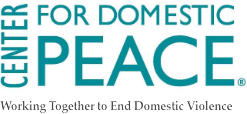The Police Just Arrived. What to Expect.
Having the police show up at your door can be a very scary situation, especially if you are already in fear. Knowing what to expect may ease some of the stress. This is not an exhaustive list as every situation is different, but here are some insights as to what the police will do.
Step One:
Initial steps taken by the police when they arrive:
- Provide medical attention if need be.
- Separate the parties involved and take statements.
- Confiscate any weapons.
- Document all parties names, ages and demeanor.
- Check for restraining orders.
Step Two:
The police will establish if self defense was used:
- Check for perception of harm, if there was imminent danger of assault.
- Was force necessary to defend against danger?
- If no self defense, determine who was the dominant aggressor.
They will determining dominant aggressor:
- Check for history of abuse, is one person usually the aggressor?
- Who is creating fear? Who is afraid?
- What is the demeanor, size, relative strength of the parties?
- Which person deprives the other of basic rights, liberties or controls the quality of the other’s life? (where they go, what they do, who they interact with)
- Are there coercive tactics at play?
They will check for defensive injury indicators – including wounds on victim’s palms of hands, bumps on head, bite marks/scratches on perpetrators chest, arms, face, chest, or neck bruising behind victims ears.
Step Three:
- Prevent abuser communication with victim/witnesses/children.
- Record statements.
- Advise perpetrator of rights and obtain waiver.
- Request jail notify victim if the perpetrator is going to be released.
Step Four:
Perform risk assessment for victim (they will assess how safe you are):
- Do you think the perpetrator will seriously injure you or your children?
- Might they try to kill you?
- Have they threatened harm to you or your children?
- Do they have access to a gun?
- How frequently do they intimidate, threaten or assault you?
Step Five:
They will inform you of the importance of securing a restraining order and inform you on how to do so. Click here to learn about Restraining Orders
Step Six:
They will connect you, right then and their, to an advocate at Center for Domestic Peace for your safety.
C4DP’s Legal Systems Advocacy Program is here to help! Call our hotline to speak to someone!
English 415.924.6616
Spanish Linea de apoyo en español 415.924.3456
